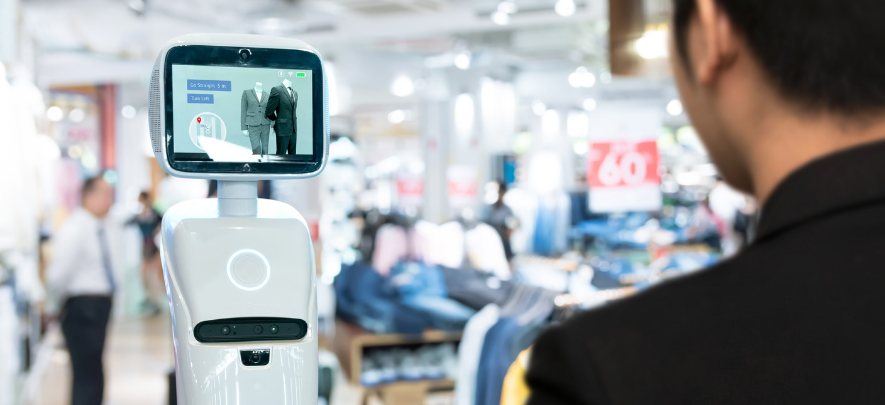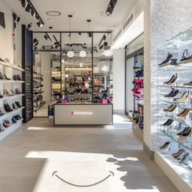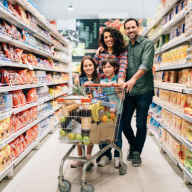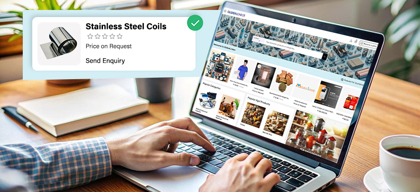Technology stepping up the retail play

Retail
291 week ago — 8 min read
Technology has been the front-runner in driving engagement and experience in consumers’ shopping journey. ‘Unravelling the Indian consumer’, a report by Deloitte and Retailers Association of India (RAI) examines the defining trends of the Indian retail sector. Based on this report, here is an analysis of how technology is impacting retail in India.
Apart from understanding consumers’ behavioural insights through advanced data analytics, emerging technologies such as IoT, AR and VR, Artificial Intelligence (AI), bots and drones, beacons, cloud-platforms, etc. have played a key role in enhancing consumers’ engagement more than ever.
Here is a look at some of the game-changing technologies in the retail sector.
1. Consumer alerts through beacons
Beacons are small, battery-operated wireless devices that transmit coded messages to nearby paired smartphones using Bluetooth Low Energy (BLE).
Beacon technology has been slowly catching up in the consumer business since its introduction in 2013. While major consumer companies continue to explore its applications, the technology has been estimated to have driven retail sales worth over USD44 billion in the US in 2017. Since beacons deliver hyper contextualised content to users based on their location, they provide an extremely personalised experience to consumers and enhance their engagement with the brand. The technology is also leveraged majorly for proximity marketing and personalised recommendations, where consumers receive brand advertisements and suggestions if they pass through a nearby brand store.
Also read: Truth be told: Busting myths around customer service & finance in retail
2. Conversational commerce through voice-activated assistance
Voice-activated assistance devices are witnessing a growing demand driven by the consumers’ increasing disposable income, rising social status consciousness, and greater preference for convenience. While the technology is at a nascent stage for ‘Conversational Commerce’, it is expected to be widely accepted by consumers around the world to complete their purchases. Currently, the tech-enabled devices are used majorly for playing music, setting alarms, searching for information, ordering cabs, etc. Voice-activated assistants can help consumers across various stages of their shopping journey, including:
Awareness: Similar to general web research, voice-activated assistants help consumers in exploring different brands and products.
Consideration: Consumers can conduct specific product/service-related searches using voice enabled technology.
Purchase: When linked to the payments account (through net banking, debit/credit cards, or m-wallets), the voice-activated assistants can perform a purchase and complete the payments.
After sales: The technology can be used to contact customer care services and get the queries/issues resolved quickly.
3. RFID (radio frequency identification) for tracking inventory
Widely accepted and used across consumer businesses, RFID enables companies to keep a tab on their inventory positions by tagging products at the time of manufacturing and allowing them to be tracked until the distribution process. Similarly, few companies also allow consumers to check specific products online, a process enabled through RFID.
4. Smart shopping carts and self-checkouts
Major global consumer giants are testing varied versions of smart shopping carts, some of them being self-driven as well. With smart shopping carts, consumer companies intend to enhance the shopping experience of consumers and set new benchmarks of convenience.
These carts are expected to serve as a direct response to online shopping, as they would guide consumers to the products in their shopping list and enable self-check-outs.
Similarly, companies are also testing the concept of smart shelves, which consist of multiple sensors, each sensing a unique aspect of the product – weight, dimension, form, packaging intact or open, etc. These individual information pieces together combine to a broader product picture, which enables the sensors to track the product purchase and automatically update the shopper’s bill, based on the product pickings. Coupled with deep machine learning algorithms, these information pieces can be stitched together to provide highly insightful shopping characteristics of consumers, which is expected to further open up multiple channels for companies to personalise their offerings for each set of consumers.
Also read: Colours of 2019
5. Touchless commerce through contactless payment methods
With the advent of fintech, payment means have increased manifold. While traditionally, consumers used to make the payment for their purchases through cash or plastic money. However, the rise of internet and other payment methods including net-banking, online cash transfers, mobile wallets, single touch payments, payment through scanning code, etc. have shown an exponential increase in the country. Moreover, “selfie payments” is another advance and innovative payment solution, which is expected to revamp the payment process across consumer markets and other industries.
Being already rolled out by a few finance and consumer companies across different parts of the world, the technology leverages “facial recognition” to authenticate payments. Further, to address the concern of security, as photographs could also be used to authenticate the payment process, companies require the consumer to make a particular gesture while looking at the camera – a blink, or a smile, or a wave, etc.
Voice-activated assistants can provide a direct communication channel between the consumer and the brand and make the whole process hands-free and convenient, thus removing barriers to consumer engagement.
6. Automated product delivery at consumers’ doorstep
Major consumer brands across the globe are investing in innovative ways for making product delivery seamless, convenient, and cheaper. With brands exploring multiple ways of leveraging a host of channels to accomplish the last leg of consumers’ shopping journey, new delivery models are increasingly coming up. Consumer experience and instant gratification seem to be the main drivers behind these innovations.
Brands are experimenting with automated delivery through self-driven and AI-enabled trucks, which drive to consumers’ pre-fed locations, deliver the products at consumers’ doorstep and alert respective consumers on their smartphone app. Similarly, pioneering brands in consumer markets and retail are also testing delivery by drones through aerial route. Innovations like these present a promising future to the delivery challenges, especially the last mile delivery concern in India.
Also read: 10 retail trends of 2019 that you need to know
Image courtesy: shutterstock.com
To explore business opportunities, link with me by clicking on the 'Connect' button on our eBiz Card.
Disclaimer: This article is based solely on the inputs shared by the featured members. GlobalLinker does not necessarily endorse the views, opinions & facts stated by the member.
View STOrai 's profile
Other articles written by STOrai Magazine
The Art & Science of People Pleasing in Retail
11 week ago
Most read this week
Trending
Ecommerce 6 days ago













Comments
Share this content
Please login or Register to join the discussion